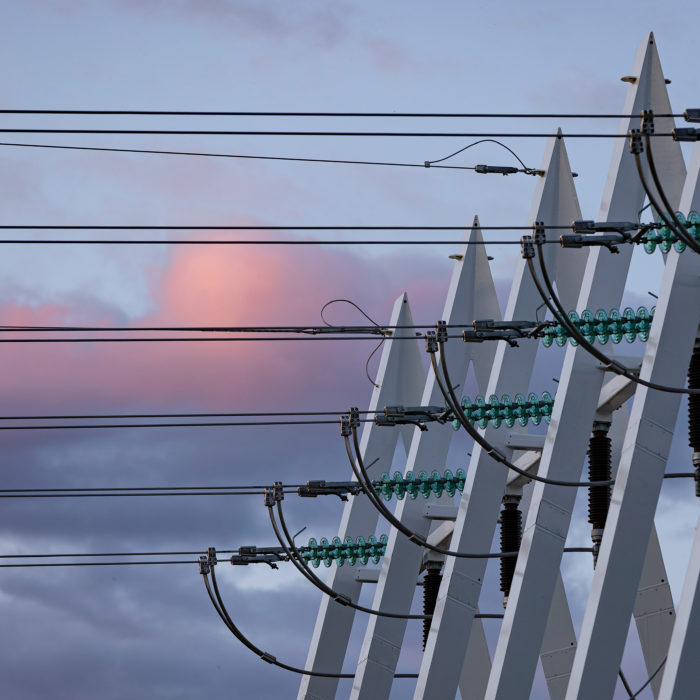A smart grid refers to a smart electricity system that combines varying production and consumption in a cost-effective manner. Over a two-year period, the Smart grid working group has outlined common goals according to which organisations in the industry will develop their operations in the future.
“I consider the working group’s efforts to be very important and beneficial. Now we have a clear direction and various parties can begin the practical work,” says group member Riina Heinimäki, Executive Senior Advisor at Finnish Energy.
Some of the changes will require amendments to legislation. At the corporate level, the development work will mean investments in new technology and service development. The change process will last for several years. For example, next-generation intelligent meters will be installed gradually as old meters come to the end of their service life.
However, the change is already in progress on the electricity market. Dynamic pricing is being used in energy prices and commercial demand-side management services are available.
“In comparison to many other countries, Finland is quite far along in its development,” states Heinimäki.
Data management creates business
Data management is an integral part of the smart grid. When an increasing number of devices are smart, they also collect data at the same time. Utilising that data will become an important part of companies’ activities. Heinimäki believes that data-based expertise will lead to a lot of new collaboration in the future.
“Speed is one of the general trends in the electricity market. Quick decisions are needed, and this requires efficient data management.”
As the service field becomes more diverse, the end consumer will have to choose from a much wider range of services. The companies providing those services need to help consumers make their choices. Some consumers appreciate the opportunity to participate in energy management themselves, but others want a ready-to-use and easy solution. Companies have to understand the needs of different customers and offer each one a suitable service.
New business and more competition for energy companies
In the future, energy companies will be selling more and more packages in which energy is just one part. Other areas include overall cost management, environmental values, and security. The new service areas will also bring different types of operators and partnerships to the field. One example is companies that sell home automation technology.
Diversifying customer needs may be a challenge for small companies. Even now, companies have merged their sales functions and simultaneously formed larger electricity sales organisations. A larger customer base is more likely to provide buyers for services that are less in demand. On the other hand, renewing services also opens up special opportunities.
“It’s important to determine what kind of services customers want and start boldly developing them.”
A smart grid enables consumption control
Finland has 1.2 million small buildings, and 500,000 of these are heated with electricity. As fossil fuels are increasingly being replaced with weather-dependent and variable solar and wind power, keeping production and consumption in balance becomes more challenging. This will require more active consumer participation in demand-side management.
In the current situation, load control is managed by the electricity transmission company. However, in the future this would be handled in a market-based manner – by either the electricity supplier or some other service provider. Control can be implemented by means of electricity meters.
“The Smart grid working group’s vision will serve as a technical platform that can lower the cost of electricity use for consumers,” explains Kaija Savolainen, Executive Director of Omakotiliitto (Finnish House Owners’ Association).
Energy communities and electricity storages
One aim of the Smart grid working group involves making it easier to establish energy communities. For example, a community could be a solar panel field shared by neighbours. A community is able to build a panel field cost-effectively and select a suitable site for it. Individual households can benefit more from group investment than they could by operating alone.
Another future solution is a household-specific electricity storage. If a solar panel produces a lot of energy on a summer day, the surplus can be stored for later use. As the devices develop and prices go down, storage efficiency will increase.
Savolainen sees consumers as active participants even in today’s situation. Some households use night-time electricity or other tariffs. Increasing energy prices have encouraged many to purchase air-source heat pumps and solar panels in order to keeps costs reasonable. The possibilities for consumption regulation will increase when next-generation smart meters and automation technology become available in the future.
One essential element involves using smart meters to allow consumers to cost-effectively participate in load control and be flexible in their energy consumption. Consumers can also invest in additional automation and thus enhance the benefits of control. Although such a purchase is worthwhile in the long run, the initial investment and service fees may not be feasible for some households. Savolainen emphasises that extra investments have to be voluntary for customers.
“We have to remember that electricity is just one part of housing costs. For example, various regulations already require that households invest in improving energy efficiency and, in rural areas, waste water processing.”
Benefits for the environment and the wallet
The goal is a market situation in which an economic solution for the consumer is also desirable for the environment.
“Consumers want to make environmentally friendly choices, but they also have to be attractive in terms of pricing,” remarks Savolainen.
The energy market transformation and an increasing range of options can be confusing for the consumer. New services are being created and consumers have to be able to compare them objectively. Finding the right information can be challenging for a newcomer to the market.
“It’s also important to offer unbiased information and advice that isn’t produced by a single supplier.”




